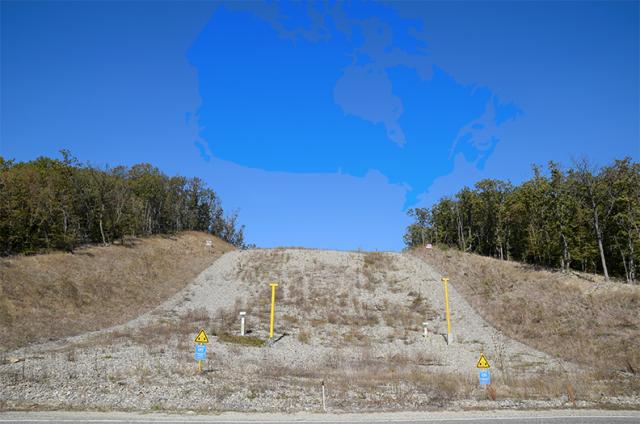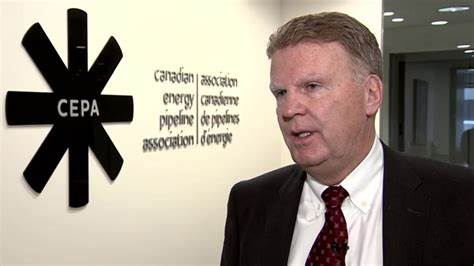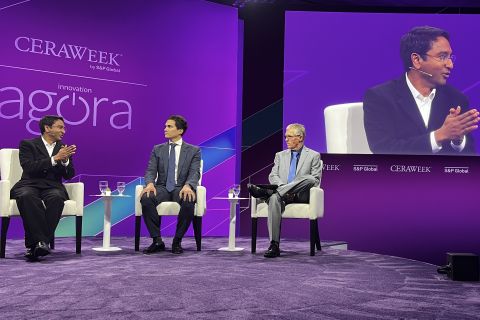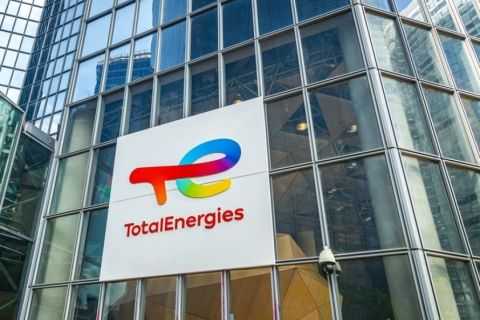
The Canadian oil and gas industry is slowly showing signs of recovery as energy experts are cautiously optimistic about the future of the vital economic driver.
The first positive sign of a turnaround occurred June 18 when the federal government approved the long-awaited Trans Mountain Expansion (TMX) project, designed to triple the amount of crude transported from the Edmonton, Alberta, area to Burnaby, British Columbia.
“I believe that Canada has to show that we are open for business,” Laura Lau, senior portfolio manager with Brompton Group, told Hart Energy. “Canada has to show that if companies play by the rules, they will get their projects approved in a timely and efficient manner with low regulatory and legal risk. It will help when people can see that pipelines such as TMX, Coastal GasLink, Enbridge Line 5 and large projects such as LNG liquefaction plants are actually being built.”
Coastal GasLink is a C$6.2 billion (US$4.7 billion), 670-km, 48-in. pipeline from the Dawson Creek area of northeast British Columbia to Kitimat near the Pacific Coast. The pipeline is part of the C$40 billion (US$30.2 billion) LNG Canada export project. Coastal GasLink announced plans to proceed with construction following a favorable Final Investment Decision from LNG Canada on Oct. 2, 2018.
TC Energy was selected in 2012 to design, build, own and operate the pipeline. The project passed its last major regulatory hurdle on July 26 when the National Energy Board ruled it was not subject to federal review since it does not cross multiple provincial boundaries.
Enbridge’s Line 5 is a 645-mile, 30-in. pipeline carrying light crude and natural gas liquids originating in Superior, Wisc., traveling through Michigan’s Upper and Lower Peninsulas and terminating in Sarnia, Ont. Michigan officials are concerned by sections of the pipeline in the Straits of Mackinac. Environmentalists and some state officials want the 66-year-old line decommissioned due to fears of leaks. Enbridge has proposed a $500 million tunnel project that would house a new underwater pipe segment. Enbridge is waiting for a permit from the U.S. Army Corps of Engineers.
The latest report on Aug. 7 disclosed that erosion has caused a gap beneath the Great Lakes pipeline that is larger than allowed under Enbridge’s agreement with the state of Michigan. Enbridge said the opening does not pose a safety or integrity risk.
Another Enbridge project involves its $9 billion Line 3 Replacement project which carries crude from Alberta across northern Minnesota to the Enbridge terminal in Superior, WI. The project would add 370,000 barrels per day (bbl/d) of crude but will not be commissioned until the second half of 2020, a year later than expected, because of state permitting issues. In June, the Minnesota Court of Appeals ordered a further review of potential environmental impact. The current pipeline was constructed in the 1960s and runs at half of its original capacity. Construction of the Canadian portion of the line is complete.
The High Cost Of Bottlenecks
Since 2016 only one major transmission pipeline application has been put forward in Canada, compared to 14 in the U.S. Bottlenecks have constrained producers seeking to move their product; the main beneficiaries are railroads, owners of storage facilities and U.S. producers.
In a study released May 8, Toronto’s Fraser Institute estimated that pipeline bottlenecks last year cost Canadian oil producers C$20.62 billion (US$15.5 billion) because of the huge discounts they were forced to offer. In September 2018, Western Canadian oil production reached 4.3 MMbbl/d, but the takeaway capacity remained constant at 3.9 MMbbl/d. For Canada’s gross domestic product, the overall loss of oil revenue is about 1%. Canadian producers and the Alberta provincial government agreed last fall to cut 8.7% of oil production, a scheme that has helped decrease the differential with WTI but is not seen as a long-term solution.
One recent report said offtake from the Western Canadian Sedimentary Basin (WCSB) rose 40% in April over March, though not close to the record set last December. Analysts at Peters & Co. estimate that until a new export pipeline is completed, the WCSB will need at least 400,000 bbl/d of rail and/or curtailments to balance the market. Maximum storage capacity is estimated at 37 MMbbl. Even with cuts made last fall by Alberta producers, oil inventories in Western Canada set a record of 37.1 MMbbl in April, falling to 34 Mbbl in May, reported Genscape.
A new forecast released June 13 by the Canadian Association of Petroleum Producers (CAPP) was less than promising. CAPP estimates oil production will grow by an average of 1.4% annually until 2035, citing the lack of new pipelines and inefficient regulation for halving its forecast from five years ago.
Though Canada holds the world’s third-largest crude reserves, CAPP insisted, “We need pipeline capacity and more efficient regulatory policy to help bring investment back to the oil sector and drive growth.” CAPP also forecasts that capital investment in the industry would fall to C$37 billion (US $27.7 billion) in 2019, compared with C$81 billion (US$61.2 billion) in 2014.
The increased uncertainty was also expressed in a just-released study from the Canadian Energy Research Institute which suggested that “growth in oil sands production over the next 20 years is expected to be lower than previously forecast, despite falling project construction costs.” From production of 3 MMbbl/d in 2018, production is seen averaging 80,000 bbl/d to between 4.1 MMbbl/d 5.8 MMbbld/ by 2039, an estimated 2% increase compared to last year’s forecast of 3%, CERI said.
TMX Gets A Restart
The Trans Mountain Expansion is designed to export oil primarily to the Asia Pacific. The original pipeline was built in 1953 and remains the only transportation link to the west coast. Its importance to the national economy was shown when the federal government bought ownership of the project in 2018 from Kinder Morgan. The project has faced fierce opposition in British Columbia and some foes are still unwilling to throw in the towel.
Living Oceans Society, a British Columbia environmental group, wants the National Energy Board to order Trans Mountain to prove that shippers, which include Suncor Energy Inc., Cenovus Energy Inc. and Imperial Oil Ltd., are still committed to moving their product on the pipeline now that project costs have increased, according to CBC News. Kinder Morgan had estimated the expansion would cost C$9.3 billion(US$7 billion) in August 2018, up from a previous estimate of C$7.4 billion ($5.6 billion). Living Oceans estimates the final cost is now between C$12-15 billion (US$9-11.3 billion), which factors in the C$4.5 billion ($3.4 billion) the federal government paid Kinder Morgan.
Karen Wristen, executive director of Living Oceans, told CBC News that project costs have gone up and construction should not start before shippers indicate they still support the project. She said it is critical for Canadian taxpayers to have that information to know if they are getting a good deal for the pipeline they own.
"We can sell it if it's a commercially viable project and the shippers are prepared to pay rates that match up with the new cost of the project," she said. "But if we're selling a project with shippers paying rates for a C$7.4 billion project, but it's actually a C$15 billion project, that's not a commercially viable asset."
Wristen said shippers agreed to pay tolls based on earlier financial projections and the NEB should insist on new agreements before construction begins. Trans Mountain President and CEO Ian Anderson said shippers remain supportive. "They've done their market analysis. They've looked at global supply and demand and they're in full support of the expansion,” he said.
He has said construction will start up in the fall.
In a statement to CBC’s The Early Edition, Cenovus Energy Inc. said it "continues to be supportive of all projects that would open up access to new markets for our oil."
Joseph Doucet, dean of the Alberta School of Business, added that he has "no doubt the project is still commercially viable."
Doucet said even if prices are fluctuating now, producers and shippers are looking at 20- to 30-year market forecasts and the outlook is good. He said fluctuating costs now, even if they are in the billions of dollars, are "not large enough to offset the potential gains for shippers" who want this project, so they can gain access to global markets.”
In addition to TMX and Line 3 Replacement, TC Energy’s KXL is another key conduit for Canadian crude. All three have been in progress for almost 10 years and are not forecast to be online for at least another two years. KXL is in a holding pattern with legal challenges in Nebraska and Montana. KXL did receive a favorable appeals court ruling in Montana in late June, but TC Energy said it is too late to start construction this year.
On a positive note, Plains Midstream Canada announced plans July 8 to expand its Rangeland crude oil pipeline to provide more capacity north to Edmonton and south to the border at Carway. Combined, the expansion will increase Rangeland’s current light crude oil capacity to 200,000 bbl/d. The expansions will be staged into service later this year.

Energy executives, including Chris Bloomer, President of the Canadian Energy Pipeline Association (CEPA), are also worried about the effect of newly enacted federal bill C-69, which overhauls and toughens the nation’s review process for major infrastructure projects, including pipelines.
“Our oil and natural gas resources are landlocked and because of that, foreign and domestic investors are either sitting idle or moving their money to more competitive jurisdictions. According to a report by the C.D. Howe Institute, planned investment in Canada’s natural resource sector projects fell $100 billion between 2017 and 2018. This staggering drop is equivalent to 4.5% of Canada’s gross domestic product,” Bloomer told Hart Energy.
“The real impact is the fact that a lot of capital has been reallocated in the industry to other parts of the world including the U.S. We’ve seen the departure of some major players. It’s been very challenging and fast-moving. We’re still in an area where it’s a big concern,” he said.
Positive Long-Term Outlook
Analyst Mark Oberstoetter of the Calgary office of Wood Mackenzie told Hart Energy they retain a positive long-term outlook for Canadian's energy industry despite “significant egress challenges in the short term.”
“The oil sands are ready to grow again with multiple steam-assisted gravity drainage projects ready for sanctioning and with improved economics breaking even below US$60/bbl WTI. But those sanctions will not occur until confidence in pipeline project construction improves. We see a positive path forward for all three major crude pipelines: Line 3 Replacement, KXL and TMX. But further delays remain possible, which leaves the upstream companies in further limbo.
“Oil production from Canada could reach 4 MMMbbl/d from the current level of 3 Mb/d. But timing on when that growth occurs is chiefly dependent on those three large pipeline projects and shifting investor sentiment on long lifecycle projects.”
On the gas production side, he said continued growth is driven largely by the Montney play which is one of the world's largest unconventional resource plays behind only the Permian, Eagle Ford and Marcellus.

“Growth would occur without LNG investment, but the increased demand coming from LNG Canada and Woodfibre help bolster our outlook for liquids-rich gas drilling in Canada's resource plays. We see the Montney growing to 20 Bcfe/d by 2030 led by many Canadian-based specialists alongside well-known companies like Shell, PETRONAS, Encana, ConocoPhillips and Murphy,” Oberstoetter said.
He agreed with Bloomer that regulatory delays and legal roadblocks, public protests, changing political regimes, investor sentiment and cost management major concerns in getting major projects built.
“For upstream energy, an expansion to an oil sands project or drilling horizontal wells do not face all of these same challenges,” Oberstoetter said. Those companies are most challenged by the factors outside of their control: market access. They have to invest amid uncertainty over which pipelines get built which determines market options and pricing.”
He said TMX is “important emotively as an example on getting projects built. It would also offer market diversity away from the U.S. Other pipelines are equally important economically, especially as they offer routes to the high-demand U.S. Gulf Coast heavy crude market.
“If all three crude pipelines get built, we'd expect TMX to bring an extra benefit to light oil production given access to markets in U.S. Northwest and shipping to Brent-linked markets (not discounted WTI or Edmonton MSW).
“That said, the regulatory approval timeline and stability (knowing it won’t change midway through) is a major factor for investors all over the world. I'd argue construction of the already approved projects is most important to get investor confidence back into upstream investments, but regulatory uncertainty will always loom if unaddressed,” he said.
KXL is estimated to add ~$4/bbl to $5/bbl in relative value for all western Canadian crude grades. Meanwhile, TMX has the biggest impact for lighter barrels should all three proceed.
The successful construction of Altagas' Ridley Island Propane Export Terminal in 2019 will be positive for NGL prices. Pembina is also moving forward with an export project at Prince Rupert and a propane dehydrogenation plant in Alberta. shift Alberta's production away reliance on U.S. exports, Oberstoetter said.
“On the gas side, LNG Canada is already moving ahead, and we expect Woodfibre LNG to final investment decision (FID) in 2019. Kitimat LNG, Jordan Cove and/or Goldboro LNG would all be additional upside but with longer term startups and not without their challenges.
“We do need continued investment in the processing plants (2.2 Bcf/d is being built over the next three years in British Columbia and another >1.3 Bcf/d in Alberta) as well as regional pipeline buildouts (TC Energy's Upstream of James River capacity additions, North Montney Phase I and II, WEI T-South expansion, Coastal GasLink),” Oberstoetter said.
Bloomer acknowledged the future of energy development in Canada and worldwide is a highly divisive subject. He said CEPA’s research indicates that approximately one-third of Canadians are against pipelines: the other two-thirds are either supportive or neutral.
“It’s important to note that Canada is a world leader in the areas of producing and transporting oil and gas. The average emissions intensity of oil extraction has fallen 21% since 2009, with strong potential for further reductions in the next decade. Canada’s industry will reduce methane emissions by 45% from oil and natural gas operations by 2025 (CAPP 2019 Crude Oil Forecast),” said Bloomer, adding that he and CEPA members “look toward the future with cautious optimism.”
Recommended Reading
TGS Commences Multiclient 3D Seismic Project Offshore Malaysia
2024-04-03 - TGS said the Ramform Sovereign survey vessel was dispatched to the Penyu Basin in March.
TGS, SLB to Conduct Engagement Phase 5 in GoM
2024-02-05 - TGS and SLB’s seventh program within the joint venture involves the acquisition of 157 Outer Continental Shelf blocks.
AI in Oil: Revolution’s Coming, but Tech Adoption Remains Tentative
2024-04-05 - CERAWeek experts say AI will disrupt oil and gas jobs while new opportunities will emerge as the industry braces for an AI-driven workflow transformation.
Geothermal ‘Could Save the World,’ but Faces Familiar Subsurface Risks
2024-03-20 - CERAWeek panelists discussed hurdles to widespread use of Earth’s heat to generate power — problems familiar to oil and gas operators.
TotalEnergies Rolling Out Copilot for Microsoft 365
2024-02-27 - TotalEnergies’ rollout is part of the company’s digital transformation and is intended to help employees solve problems more efficiently.





